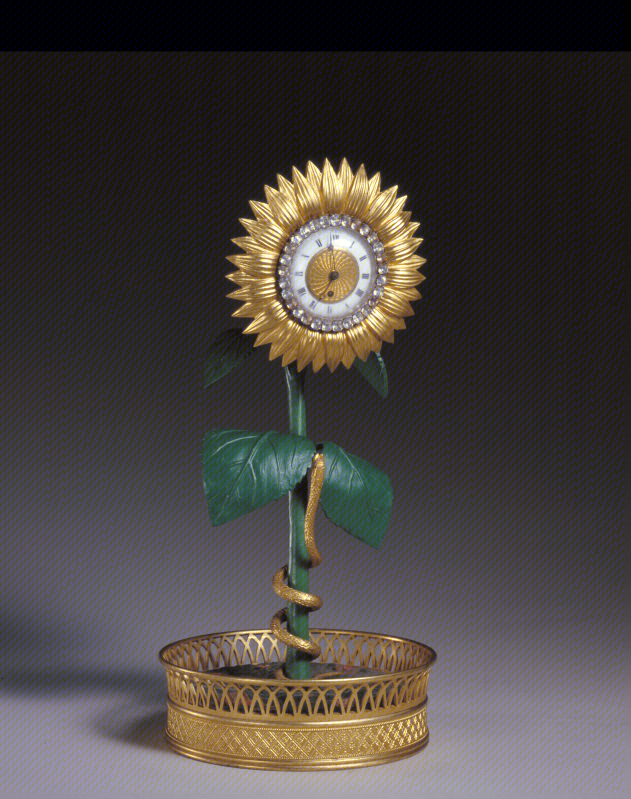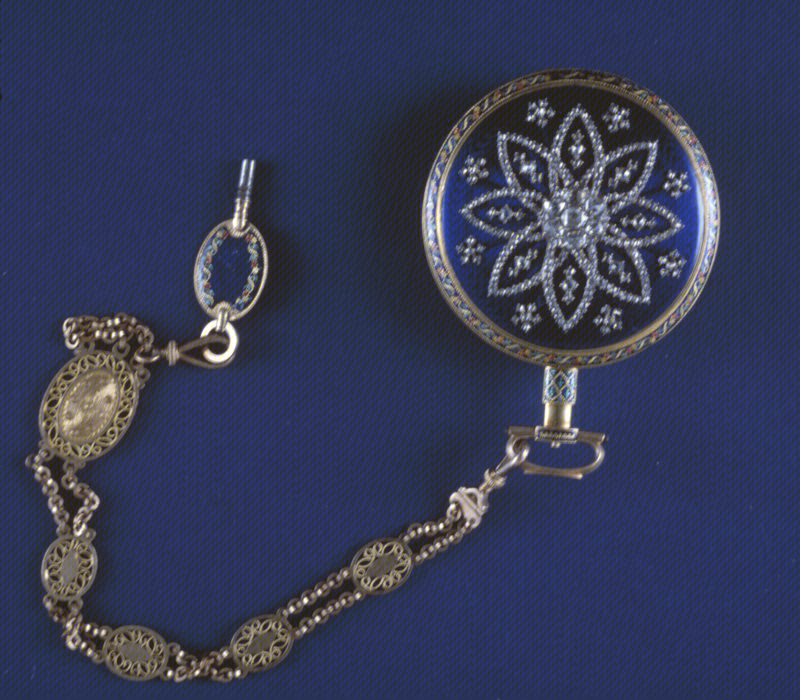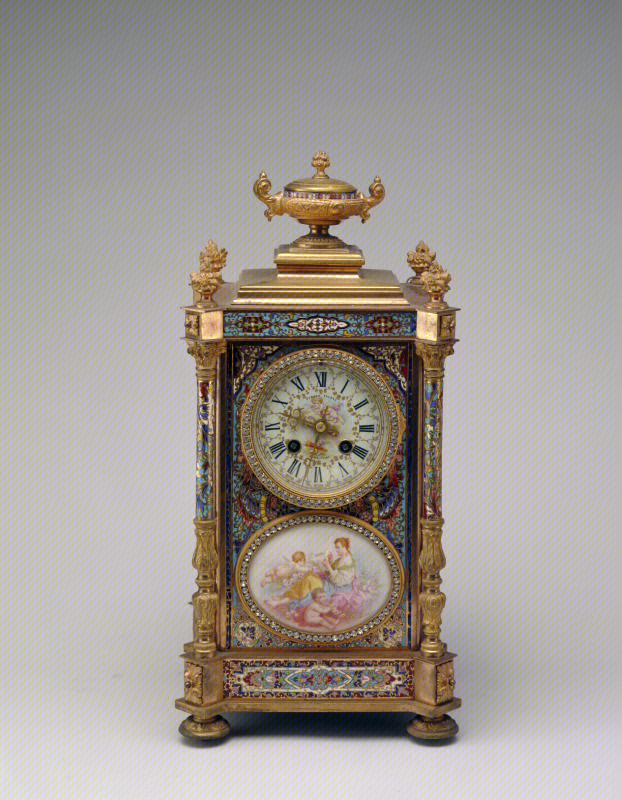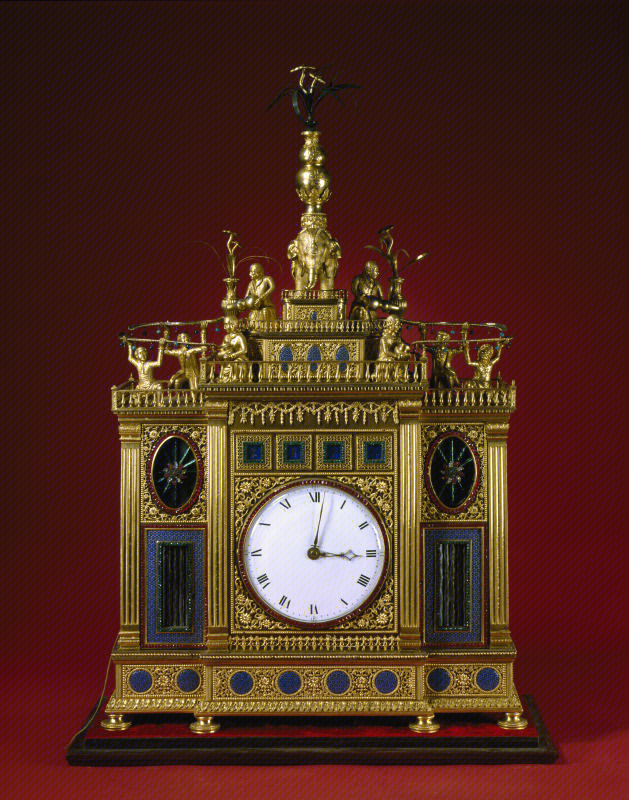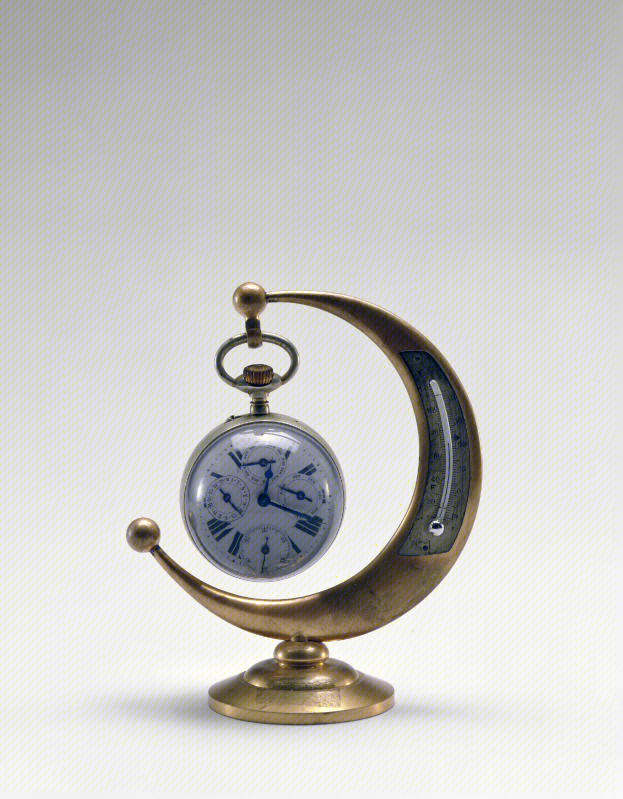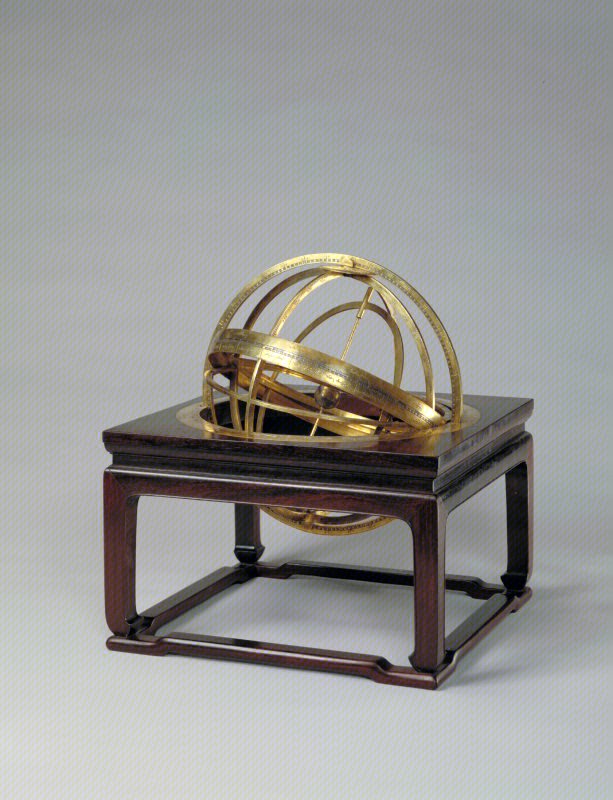
银镀金浑仪
Category:
Timepieces and Instruments
Period:
Qing dynasty
The armillary sphere is formed by three sets of rings, one inside another. The horizon, meridian, and celestial equator rings constitute the outer layer, while the ecliptic, equatorial, and moon's-path rings form the middle layer. Gimbals comprise the inner layer. Each of the rings is graduated. In the middle of the fixed general axle is a small globe carved with the names of the five continents known at that time. At one end of the axle are images of the sun and moon and a small meter. The armillary sphere is designed to demonstrate how the sun and moon circle around the earth, the solar and lunar eclipses, and the movements of other heavenly bodies. The instrument was made during the Kangxi reign by the Jesuit Ferdinand Verbiest who served as a court astronomer and presented it to the court in the eighth year of Kangxi (1669). The three layers of rings and the spherical heaven and square earth were based on the form of the traditional Chinese armillary sphere, but the graduation and principle of design were based on the Western method and Ptolemy's theory of the second century, which assumed the earth as the centre of the universe. It is an instrument that combines Chinese and Western science and technology. When the armillary sphere was taken to the palace, a debate on the advantage of the solar and lunar calendars had just ended during the Kangxi reign. As it can demonstrate scientifically how the solar and lunar eclipses take place, it played an active and guiding role in the re-introduction of the Western calendar and improvement of the Chinese armillary sphere. The ecliptic ring of the gilded brass armillary sphere is covered with inscriptions in the Manchu and Han (or Chinese) languages. The inscription in the Chinese language says, "Made by Ferdinand Verbiest and other subjects in the mid-summer of the eighth year of Kangxi."
Show All Details
Show Fewer Details
Suggest Feedback

Relevant Recommendations


